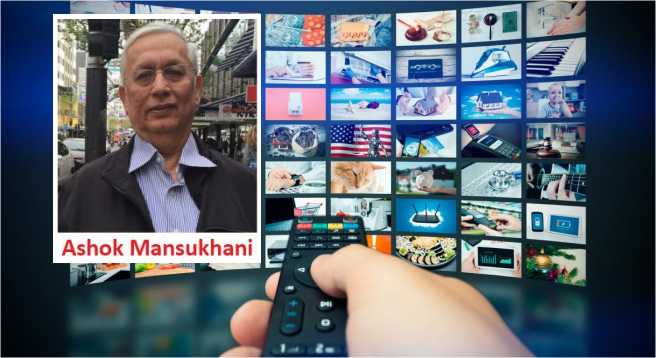By Ashok Mansukhani
The broadcast and telecom regulator Telecom Regulatory Authority of India (TRAI) is ‘upbeat’ about the cable distribution business.
- The Industry Regulator Telecom Regulatory Authority of India (TRAI) had described the health of the Indian TV Distribution Industry in 2022 as “vibrant with the presence of multiple platforms such as Cable TV, DTH, HITS, and IPTV.
- India has the second largest pay-TV market in the world in terms of subscribers after China, with 197 million TV households growing at 7.5% YoY. Primarily, pay TV services are being delivered through Cable TV and Direct to Home (DTH) systems.
A. CII FORECASTS NEW TRENDS SHAPING THE INDUSTRY
- The CII-BCG State of Media report released in November 2022 titled Shaping the Future of Indian Media & Entertainment forecasts that while Television is a healthy 32-34% of the total market, four new trends will shape the Indian Media and Entertainment Industry soon.
- M&E increasingly catering to “ME” choices– Digital video & gaming leading the boom with >40% of total media consumption in 2022, backed by internet & smartphone penetration growth, ease of accessing content across any device, strong preference for regionals and micro-genre.
- Two-way interactive media piques interest-Average time spent on interactive episodes is ~20% higher than normal episodes.
- Snackable content grabs attention-Preference for more snackable content is increasingly driven by the reduction in attention span.
- Premium content is finding more traction-SVOD subscriptions have grown to 85–90 Mn in 2022, an increase of 16x–17x over the past five years, with an increasing willingness to pay for premium/ exclusive content (Sports, Tent Poles) & experience personalisation.
C. “FREE IPL” ON JIO CINEMA AND ATTRACTIVE DATA PLANS CAN ACCELERATE CORD CUTTING OF CABLE
- The recent decision of Jio to offer free IPL Cricket on Jio Cinema has already led to a significant shift in cricket viewing in IPL 2023 and a major shift to digital advertising, which can put the so-far flourishing Cable and DTH platforms at grave risk of a runaway cord-cutting permanently to Digital Platforms.
- The IPL 2023 season consists of 74 matches in 12 venues and will last till May 21, 2023. Star Sports claims that the opening game of IPL 2023 reached 140 million people, with a 47% growth in consumption and a 37% growth in ratings. BARC data showed a slight fall in the opening match for Star Sports to 22% from 23.1% in 2022.
- Jio, on the other hand, claims to have “smashed all viewing records” and claims that the total number of Jio Cinema IPL viewers on Day 1 touched 50 crores with three-day viewing at 147 million viewers. Jio claimed that fans continued to “lap up unique features like 4K feed, 12-language coverage, 16 unique feeds, hype mode, and Multi-cam setup, among others.”
- These are early days for the Disney-Star and Jio battles for viewership and advertising revenue. Still, an audacious move by Jio just before IPL matches is to offer rock-bottom data plans to new subscribers.
- For instance, the Rs. 999 data plan (for new Jio subscribers) offers a very attractive package of 3GB of daily data at high speed for 84 days. The plan offers customers unlimited voice calling and 100 SMS/day and additional benefits such as JioTV, Jio Cinema, Jio Security and Jio Cloud. The Rs 999 plan bundles 40 GB of bonus data for the customer. There is also unlimited 5G data for eligible subscribers.
Remarks
- This writer feels that Jio’s moves can completely disrupt the Cable Industry if the habit of free IPL (and later sports tournaments) with attractive data plans catches on with viewers.
- What impact this pathbreaking move will have on Cable Industry will be known in a few weeks. This writer believes that MIB/TRAI/CCI will remain aloof from this battle of giants.
- The irony is that Jio controls three large Multi System Operators-GTPL/Hathway and Denwith an estimated subscriber base of 20-25 million customers.
- Subsequent events will reveal whether purchasing a controlling stake in the three MSOs was a masterstroke to crash into the cable base for Jio’s long-term digital penetration and fibre monetisation moves.
- Of course, competition is welcome, but predatory pricing can throw legacy media out of the reckoning.
D. NEW TARIFF ORDER: 3 HAS CREATED AN UNEVEN LEVEL PLAYING FIELD IN THE INDUSTRY
- The original Digital Regulations of 2017 underwent serious challenges from Broadcasters in the Madras High Court and Supreme Court, but they failed to get substantial relief. NTO:1 got implemented in 2019.
- Subsequently, TRAI amended the NTO:1 Tariff Order, claiming that the benefits of the Digital Regulations were not reaching viewers. It issued an amended Tariff Order (NTO:2)to rein in Broadcaster’s ability to price channels so that viewer choice became illusory.
- The Broadcasters filed a writ in the Bombay High Court, which upheld the Constitutional validity of TRAI’s Tariff Regulations in 2021. It also upheld most of the TRAIamendments in NTO (2). The Broadcasters filed Special Leave Petitions in the Supreme Court but failed to obtain an interim stay on NTO:2. However, TRAI obliged them by postponing the implementation date repeatedly.
- Meanwhile, a change of guard in the MIB and TRAI at senior levels and back-channel discussions led to Broadcasters withdrawing their appeals to the Supreme Court. This encouraged TRAI to set up a Committee of Broadcaster, MSO, and DTH Associations. (Cable Operators were consulted later in an online discussion as per TRAI’s Explanatory Memorandum to the NTO:3 Tariff Order in 2022.)
- The withdrawal of litigation in the Supreme Court resulted in widespread consultations and a new Consultation Paper issued in 2022. The MSO Association (All India Digital Cable Federation (AIDCF) felt that TRAI needed to consider its viewpoint on various pressing issues more seriously.
- In its reply to the Consultation Paper, AIDCF stated:
- The foremost challenge to be faced by the entire broadcasting and cable services industry is a trend of constant decline in the subscriber base for MSOs and DTH operators.
- The pricing on average for OTT platforms is lower, and the paid content is also provided advertisement free to the subscriber. There is no level playing field available to MSOs as the RIO offered to MSOs differs from the pricing available for online content on OTT platforms.
- Any attempt to redress the issue of falling subscriber numbers across the Industry cannot be made without creating a level playing field and appreciating how the Broadcasters participating in the Cable TV and OTT platforms are distorting the decision-making and approach of Broadcasters towards the Cable TV medium.
> The recent RIOs and channel prices issued by Broadcasters have defeated the main purpose of the NTO 2.0 regulatory framework, i.e., to reduce the television bills of the subscribers; however, it is proving exactly the opposite.
E. NEW TARIFF ORDER: 3 FOCUSSED ON BROADCASTER DEMANDS
- Despite such a strong plea by AIDCF, the New Tariff Order (NTO:3) issued by TRAI on 22.11.2022 (made effective from 01.02.2023) focused on primarily satisfying all key Broadcaster demands.
- Much later, in March 2023, TRAI announced it would issue another Consultation Paper in April 2023 to handle all Distribution-related issues. The TRAI Advisor stated, “It will discuss issues like a ceiling on network capacity fee, multi-TV connection tariff, carriage fee, and level-playing field with regards to the pricing of TV channels.
- The Consultation Process resulted in a New Tariff Order issued on 22.11.2022, tailored to appease the powerful Broadcasters.
- In essence, the Explanatory Note to the Tariff Order (NTO:3) gave significant relief to Broadcasters, stating:
> “Balancing the interests of the service providers (Broadcasters and DPOs) and consumers, the Authority has decided that the ceiling of Rs. 19/- on the MRP of a channel to be part of a bouquet will be in order”. (This restored the NTO:1 ceiling)
> “After considering all these factors, the Authority has prescribed a maximum discount of 45% on the sum of a-la-carte channels for arriving at the bouquet prices.”
Remarks
- This writer notes with regret that AIDCF failed to persuade TRAI to maintain a level playing field between all service providers, achieved by the Cable Industry only in 2017 in NTO:1 after struggling for fair play for 13 long years with the Regulator.
KERALA HIGH COURT REJECTS AIDCF PETITION
- All India Digital Cable Federation representing large MSOs, filed a writ petition against NTO:3 in January 2023. The Petition alleged that:
> The impugned Regulations contravene the TRAI Act and Article 14 of the Constitution.
> They take away from consumer choice and autonomy.
> They violate Section 11 (4) of the TRAI Act on the transparent regulation-making process.
- A single bench Judge in the Kerala High Court heard the AIDCF writ for a couple of months before finally rejecting the petition by judgement dated 04.04.2023.
- Therefore, in my considered opinion, the Regulations being ‘legislation’ empowered under the TRAI Act 1997, what is to be looked into by this Court is only whether there is any arbitrariness, illegality or malafide on the part of the Authority in making the Regulations.
- When there were effective discussions among the stakeholders and the power was exercised by the Authority in terms of the powers conferred under Section 11 r/w Sections 36 and 37 of the Act, 1997, it cannot be said that there was arbitrariness or illegality or any other legal infirmities on the part of the Authority in introducing the 2022 Regulations and the Tariff Order.
- Therefore, I do not think there is any violation of the fundamental rights guaranteed under the Constitution of India.
> Above all, it is significant to note that none of the end users challenged the amendments in 2022. The Authority makes the Regulations and the Tariff Orders to protect the public interest and regulate and control telecommunication services for the public good.
> When the motive behind the enactment is to protect the public interest, the sole question to be considered by this Court is whether the Authority exercised any unbridled or excessive power while introducing the Regulations and the Tariff order.
> Therefore, I am of the view that the Petitioners have failed to establish any illegality, arbitrariness, unbridled exercise of power, mala fides or any other legal infirmities of similar nature in the 2022 Regulations and the Tariff Order to interfere with the same, exercising power conferred under Article 226 of the Constitution of India.
> Needless to say, the writ petition fails, and accordingly, it is dismissed.
Remarks
- This writer notes with bemusement that for the first time in 19 years, TRAI and Broadcaster Senior Counsels argued together against MSOS/Cable Industry on coordinated and effective lines leading to the rejection of the AIDCF writ.
- From the time TRAI was appointed as Broadcast and Cable/DTH Regulator in 2004, the Broadcasters have constantly fought and lost legal battles challenging the very existence of TRAI as the Regulator for the Industry.
- Yet having achieved whatever they wanted in NTO:3, they used their entire acumen and firepower to help TRAI to get the AIDCF writ dismissed in the Kerala High Court.
- This writer feels that the Cable Industry needs to put the NTO:3 legal fiasco behind itself and deal with more pressing challenges of rival technologies and shifting audience tastes.
D. NEW CHALLENGES FOR THE CABLE DISTRIBUTION INDUSTRY
- So where does that leave the Indian Cable TV Distribution Industry, which TRAIdescribed as “vibrant” in 2022? While optimistic forecasts by research site Statista claim India had about 103 million cable TV subscribers in the fiscal year 2020, other predictions come to lesser forecasts.
- Their forecasts are based on the last BARC data released in 2020 on the number of connected TV homes being 210 million. Suppose one accepts Prasar Bharati Free Dish guesstimate of about 45 million boxes and DTH subscribers at 67 million as per TRAI’slatest performance indicator report released in November 2022 and excluding approximately 1 million IPTV subscribers. In that case, cable subscribers should be numbering about 97 million.
- This is quite a healthy figure if it is accurate. The problem is that, unlike DTH, where active connected subscribers are reported quarterly by TRAI, similar connected STB data for Cable is not reported by TRAI though it has reams of data. Broadcasters, too, know the actual figure but will not reveal any negative data for fearing loss of advertisers to Digital Media, which has already accelerated due to Jio’s predatory moves.
- As per the latest estimate on the Global Data website, India has approximately 302.4 million homes (in 2021), with an average of 4.44 family members per home. This leaves about 92 million homes needing apparent access to Cable/DTH/Free Dish.
- On the other hand, the latest estimates by TRAI show that there are currently 1147 million wireless internet subscribers. A recent Axis My Indi India Consumer Sentiment Index (CSI) reported in Social Samosa states that from the Respondents polled, approximately 61% watch online video content like YouTube/OTT on their mobile/home TV.
Remarks
- So, is there any scope to grow for Cable/DTH, or is India fully saturated? The rapid urbanization of India and the growth in living standards of rural India offer scope for cable penetration.
- Still, unless BARC updates its viewership data to current data and detailed surveys by reputed organisations are taken, it is challenging to estimate Cable dark areas.
E. CABLE NEEDS TO INNOVATE TO SURVIVE
- The Cable TV Distribution Industry faces its strongest challenge since the first Cable networks were launched in 1992 after the Gulf War of 1991.
- Looking to the massive triple challenges of OTT platforms (optimistic estimates are that over 600 million are watching streaming networks over nearly 50 OTT platforms), Free Dish (45 million estimated viewers) and Jio Cinema/Jio Fibre (110 million watched the World Cup Football ‘free’ on Jio Cinema in late 2022) the Indian Cable TV Distribution industry cannot afford to take competition for granted.
- There are many measures that the Cable Industry can take to retain its customer base for the next decade or more:
- It is time that the Industry introduced e Aadhar-based KYC norms to create a transparent subscriber base available during Broadcaster audits and for Regulatory and Tax Authorities to eradicate once and for all the oft-repeated and largely false charges of cable “piracy”.
- All bills and receipts should be digitised, ensuring transparent billing and collection and infusing confidence in the customer and the authorities.
- All forms of digital payment by credit card/net banking/ UPI should be encouraged to reduce outstanding and infuse transparency.
- A rapid installation of high-speed broadband, either by leasing or installing fibre, would help create a new “sticky” revenue stream and keep the customer happy to retain their subscription.
- Large MSOs can enter OTT aggregation deals with the OTT platforms, helping retain customers and giving a new revenue stream for OTT platforms.
- The focus can be on local Television by providing high-quality coverage of local events/festivals and sports events. This can be followed by mopping up local advertisements.
- Local Operators in smaller towns and cities can form cooperative, completely digitised headends to provide customers with high-quality Pay TV and Broadband service.
- Local Operators can also join the very innovative NXT Digital HITS platform, which would give them immediate access to 400-500 TV channels to provide to their customers using the unique COPE (Cable Operator Premises Equipment).
- Finally, Cable Industry has unique access to every home as a trusted TV supplier. Improving face-to-face communications with millions of customers will infuse the customer with confidence and retention of his subscription.
CONCLUSION
- This writer is confident that Indian Cable TV Distribution Industry will rise to the occasion and confidently face the challenging future.
(The author is a media veteran having spent decades with the government and private sector media organizations, specializing in legal and policy matters. He has retired from the Hinduja group after having spent over two decades with the group and having been in the leadership team that built the group’s media business. He is now a practising high court lawyer based in Mumbai. The views expressed in the write-up are those of the author and Indianbroadcastingworld.com need not necessarily subscribe to them.)
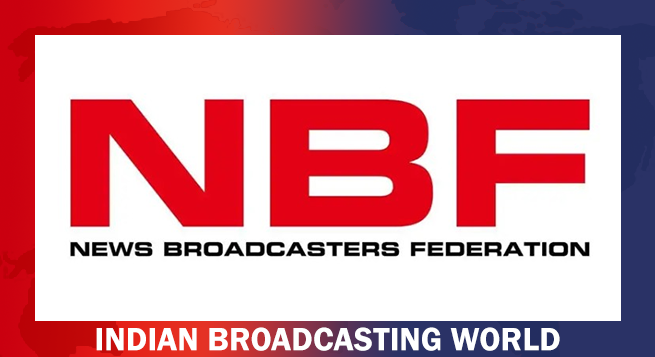 NBF issues another advisory to member TV news channels
NBF issues another advisory to member TV news channels  Govt directs OTT platforms to stop airing Pak content
Govt directs OTT platforms to stop airing Pak content 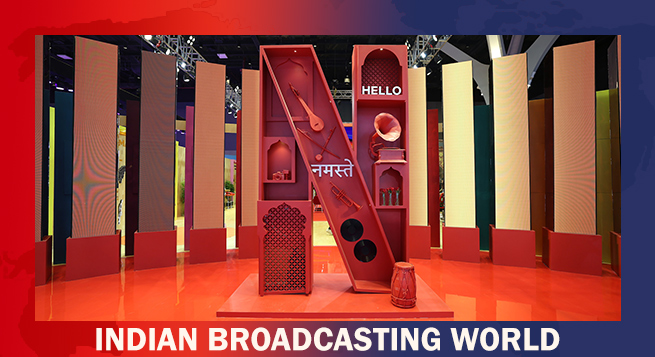 Netflix to have AI-powered iOS search in TV app revamp
Netflix to have AI-powered iOS search in TV app revamp  India sets up panel to review copyrights laws, AI disputes
India sets up panel to review copyrights laws, AI disputes 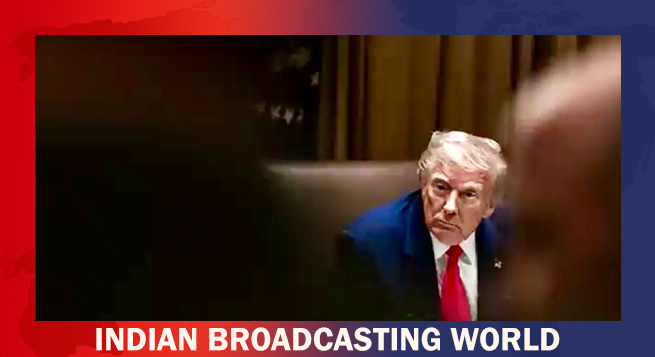 Can Trump’s foreign movie tariff threat impact Indian films’ biz?
Can Trump’s foreign movie tariff threat impact Indian films’ biz? 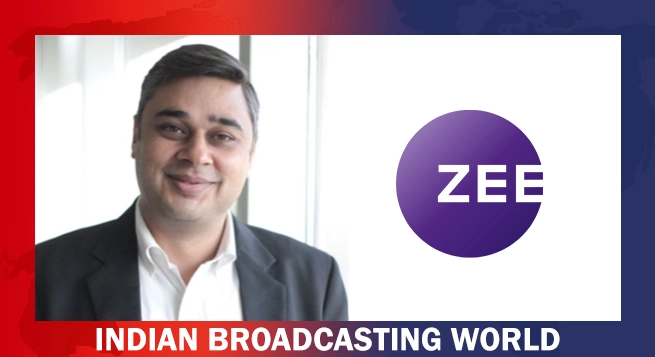 ZEEL appoints Rohit Suri as Chief Human Resource Officer
ZEEL appoints Rohit Suri as Chief Human Resource Officer 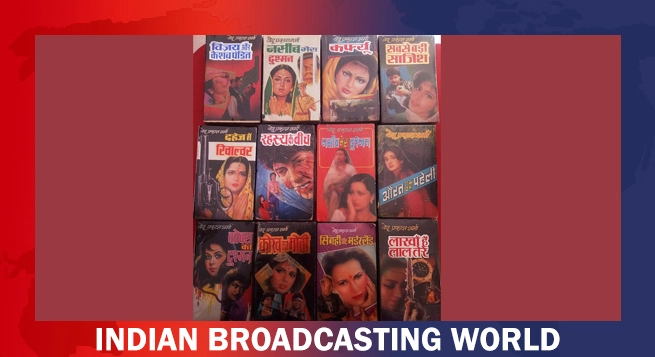 Ved Prakash Sharma’s bestselling novels to get film adaptations
Ved Prakash Sharma’s bestselling novels to get film adaptations 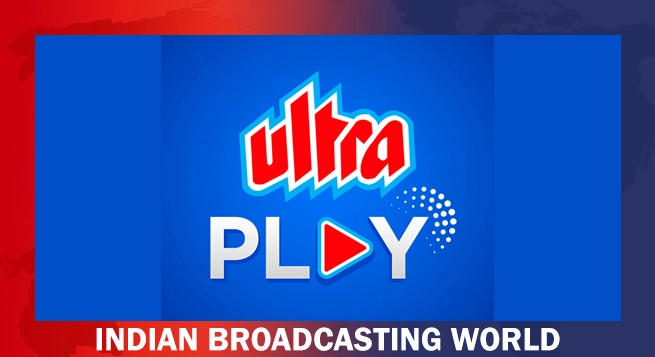 Ultra Play celebrates iconic Bollywood mothers with content lineup
Ultra Play celebrates iconic Bollywood mothers with content lineup 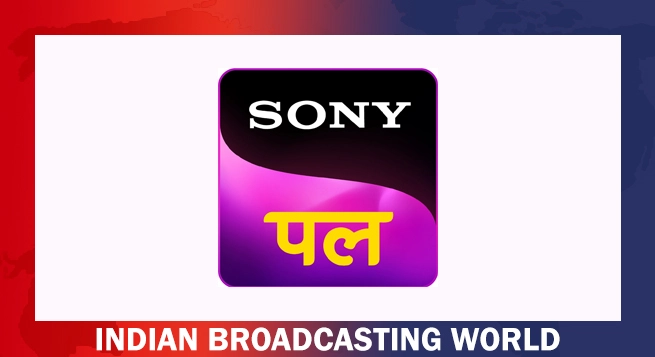 Sony PAL records 15.6% weekly reach in Week 17: BARC Report
Sony PAL records 15.6% weekly reach in Week 17: BARC Report 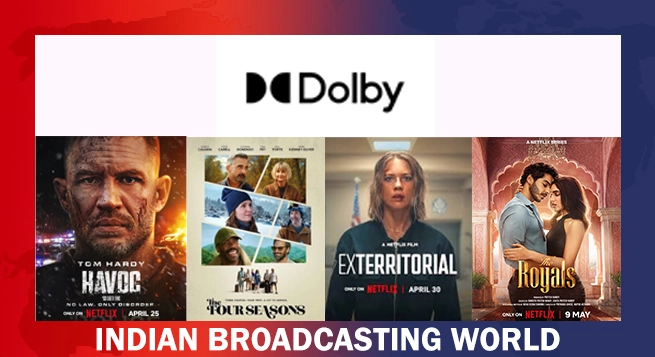 Dolby announces Mother’s Day special content lineup
Dolby announces Mother’s Day special content lineup 


